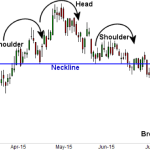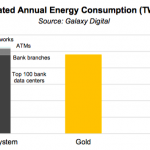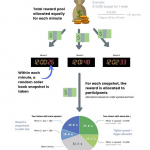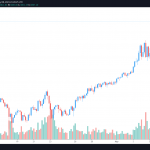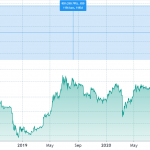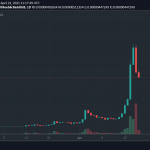
Note: If you’re unfamiliar with user-activated soft forks, read my previous article on the pros and cons of activating Segregated Witness via a user-activated soft fork. This piece can be viewed as a continuation of that one.
User-activated soft forks (UASFs) are currently seen as a controversial method of adding new functionality to the Bitcoin network because most of the recent soft forks on the network have been rolled out in line with signaling from miners (as outlined in BIP 9). The use of this sort of user-activated improvement process for Segregated Witness (SegWit) does not currently have consensus among the various contributors to Bitcoin Core, let alone the rest of the ecosystem.
The main criticism of the UASF for a network upgrade is that it could lead to a split of the Bitcoin blockchain into two separate cryptocurrencies. In the past, the ability to avoid a chain split has been described as one of the main benefits of opting for a soft fork over a hard fork. In a hard fork, a chain split happens by default because a completely new blockchain must be created to enable the new features.
With a UASF, a chain split could occur if a majority of the network hashrate does not reject blocks that are invalid under the new rules. This is because, in a soft fork, non-upgraded nodes will still follow the longest valid chain. Soft forks are backwards compatible, so blocks that have the new, soft-forked features will still look valid to the old nodes. But if old nodes are following a chain that includes a block that is invalid under the new rules, the nodes that had implemented the soft fork will now find themselves on a new, different chain — as long as the majority of the network hashrate continues to allow blocks that are invalid under the new rules.
However, if a majority of the economy decides to support the soft fork, such a chain split becomes less likely because miners are incentivized to follow users’ lead towards the chain with the most valuable block rewards for miners (the chain that leads to a higher bitcoin price). If more than half of the network hashrate is at least making sure blocks that are invalid under the new rules are ignored, then a split will not persist. To clarify, the majority of the network hashrate does not need to implement the soft fork themselves, they just need to make sure to ignore blocks that would be considered invalid under the new, soft-forked rules.
Judging Support for a User-Activated Soft Fork
Having said all that, it can sometimes be difficult to gauge support for a protocol change before it takes place. An example of this issue was illustrated by the Ethereum network’s hard fork to bail out DAO token holders. While many of the heavy hitters in the cryptocurrency community predicted that the hard fork would be a non-event, the end result was the existence of two separate blockchains, now known as Ethereum and Ethereum Classic.
Since the problems associated with a UASF are mostly correlated with a lack of certainty around the economic majority’s thoughts on the soft-forking change, the removal of that uncertainty could greatly improve the safety associated with this improvement activation method.
Using the possibility of a UASF for SegWit as an example, a futures market would allow miners (and the rest of the ecosystem) to preview the result of the implementation of the UASF before it happens.
How a UASF Futures Market Would Work
Let’s say a hypothetical UASF for SegWit is scheduled to take place on January 1, 2018. An exchange, such as Bitfinex, could allow their customers to split their bitcoins into two separate tokens today (the Bitcoin with SegWit and the current version of Bitcoin without SegWit), long before the soft fork takes place. Bitfinex would then promise to deliver tokens to their customers based on the outcome of the soft fork.
In this scenario, Bitfinex users would be able to trade these two separate coins on a market, which would allow price discovery for both potential versions of the protocol to take place far in advance of the soft fork’s activation date.
If the SegWit token has a higher price than the non-SegWit token, then that is an indication that the soft fork will be successful and lead to the existence of one, unified Bitcoin network after the soft fork. This is because, as explained previously, a majority of the network hashrate would be incentivized to follow the higher value chain. If the UASF for SegWit is desired by the market, then miners will earn more money by mining that more lucrative chain. Remember, a chain split will not persist if a majority of the network hashrate upgrades accordingly.
On the other hand, a SegWit token that trades at a price lower than the non-SegWit token would indicate a higher probability of failure for the UASF. Failure here would mean the possibility of a contentious hard fork, which could eventually lead to a new version (or possibly two new versions) of Bitcoin with SegWit that could turn out to be nothing more than another altcoin.
In an even worse scenario, two relatively equal chains would co-exist, weakening Bitcoin’s branding, network effects, and other critical attributes of the world’s first and most dominant cryptocurrency.
Still Not Useful for Contentious Changes
The above description is somewhat simplified, and there are some caveats of this design to consider.
For one, it would not make sense to activate a soft fork if there was extreme opposition to the change. The implementation of an extremely contentious change could lead to a different sort of chain split, where a small segment of the community decides to actively hard fork away from Bitcoin to create their own altcoin.
Having said that, the opt-in, backward compatible nature of soft forks also means that those who are not fans of the soft fork may not care about the existence of the new feature set. As long as they are not required to upgrade and the soft fork does not affect their own use of the Bitcoin network in a negative manner, users may decide to all remain on the same chain.
Ultimately, no one can stop users from deciding to opt into new features via soft forks. If the market demands it, then miners are incentivized to allow the soft-forked features to exist on the Bitcoin network, in addition to avoiding a chain split.
However, the soft-forking change must not be so contentious that it creates an altcoin out of protest against the soft fork. Or rather, this should be avoided if possible.
Reliability of the Futures Contracts
Of course, the implications of futures contracts for potential UASFs mean nothing if the contracts aren’t structured properly. Indeed, there are some default drawbacks of such a system.
For example, not everyone would want to participate in such a market on a single, centralized exchange, especially if it were one that had been hacked in the past such as Bitfinex. These futures contracts would be much more useful if they were implemented on many different exchanges or on a decentralized system such as Bitcoin Hivemind.
Additionally, the futures contracts must be structured properly. These contracts need to be able to properly reflect the real-world outcome of a hypothetical split between the current version of Bitcoin versus the current version of Bitcoin with SegWit (or whatever other potential soft-forking change).
A market for these contracts also needs sufficient liquidity to be taken seriously. A lack of liquidity may indicate a lack of general interest in the proposed soft fork.
What if Miners Don’t Follow Users?
If the vast majority of speculators on the futures contracts indicate their preference for a soft fork and miners allow a split to happen, then the structure of incentives in Bitcoin may be broken.
For one, bitcoin is much stronger as a brand when it is one, unified network. For this reason, Civic and Gyft Co-Founder Vinny Lingham has written about why miners should not want to see a split occur at all.
Secondly, miners are supposed to be incentivized to mine the chain that users want to use. By going against users’ interests, it’s unclear how useful the enormously large amount of hashing power that is pointed at the Bitcoin network is for users. The security offered by that hardware is only useful if it’s acting in users’ best interests.
Some may consider a chain split in the face of overwhelming economic consensus for a soft fork as an attack on the network by miners. In such a scenario, a change to Bitcoin’s proof-of-work algorithm is a possibility, especially if miners begin to actively attack the UASF chain. A change in the proof-of-work algorithm would effectively make the specialized hardware used to mine bitcoin useless.


